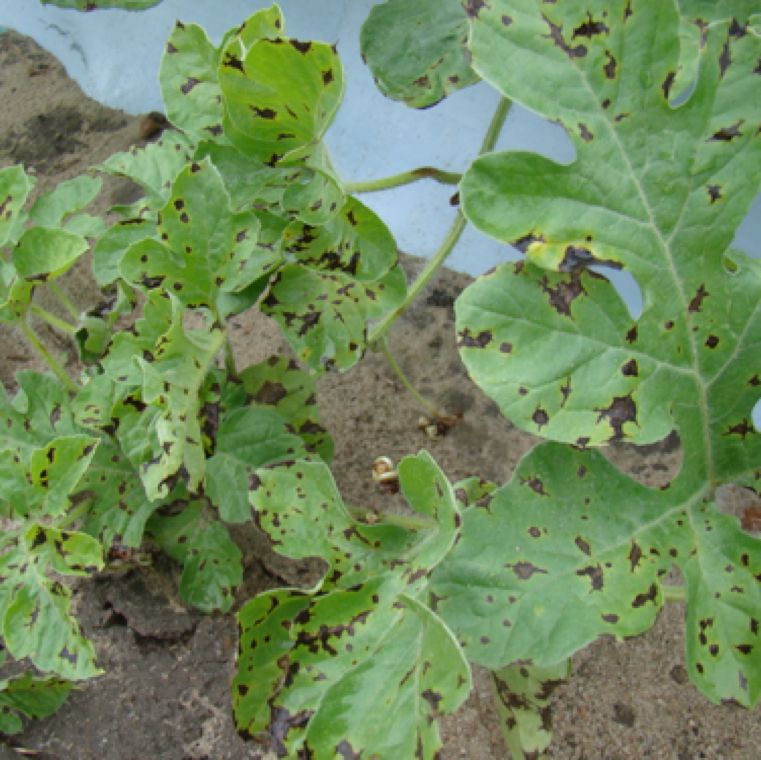By Clint Thompson
A research grant targeting anthracnose disease in cucurbit crops has one University of Georgia scientist studying irrigation timing and leaf wetness.

Credit: U-Scout/M. Paret, UF/IFAS
Tim Coolong, associate professor in the University of Georgia College of Agricultural and Environmental Sciences, outlined the details of his part of the research.
“To document periods of leaf wetness and how that really influences the severity of anthracnose infection is something that we’re looking at, to really zone in on, how much leaf wetness is problematic and so on,” Coolong said. “We’re going to evaluate leaf wetness and irrigation at different times of the day. If you irrigate at 6 p.m. for example, those leaves are going to stay wet all night. We’re looking at how that timing influences infection.
“We will be doing it at 6 a.m., noon and 6 p.m. We’re going to obviously see how 6 in the morning, that water will be dried up very quickly and probably at noon as well. We’re looking to see the critical periods of leaf wetness with anthracnose.”
The disease primarily impacts cucumbers and watermelons, but other cucurbits can also serve as hosts. Its symptoms consist of leaf spots, defoliation and an occasional fruit lesion. It can also spread in the fruit bins after harvest, which makes it more difficult to control.
Coolong said anthracnose was not as high on the radar of cucurbit farmers, say 15 years ago. But its concern level has increased in the last few years, potentially due to development of fungicide resistance.
Bhabesh Dutta, University of Georgia (UGA) Cooperative Extension vegetable plant pathologist, said in 2021, “We have bee observing loss of efficacy and control with commonly used Qol (strobilurin) fungicides in cucurbits (watermelon, cucumber and squash). QoI fungicides have been a mainstay for anthracnose management. It seems the pathogen has developed resistance to this chemistry.”
Dutta helped secure this latest grant targeting anthracnose, which will also examine fungicide resistance further.
As for Coolong, his role will be to primarily study how irrigation timing impacts the wetness of the leaves which could invite anthracnose infection.
“The hypothesis is as we supply leaf wetness, anthracnose intensity and severity will increase,” Coolong said.
Coolong will study the effect on watermelon this year but will include cucumbers in the future.









